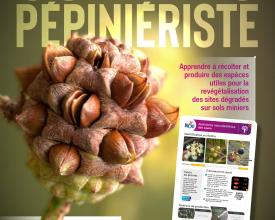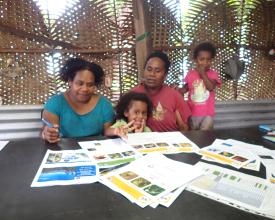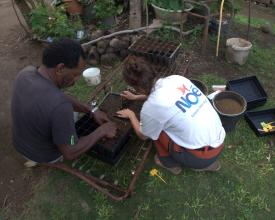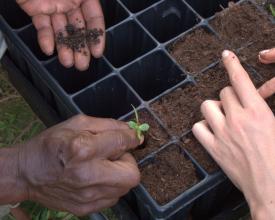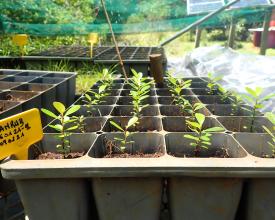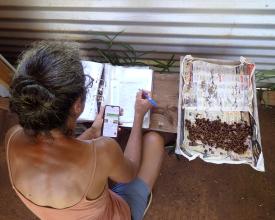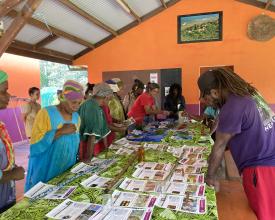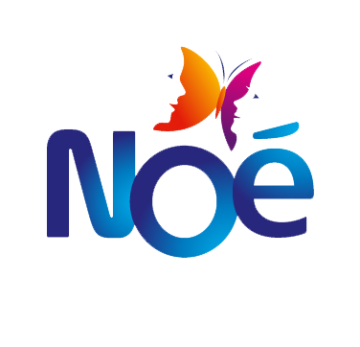
Strengthen the capacity of local populations to produce seedlings for the restoration of degraded sites
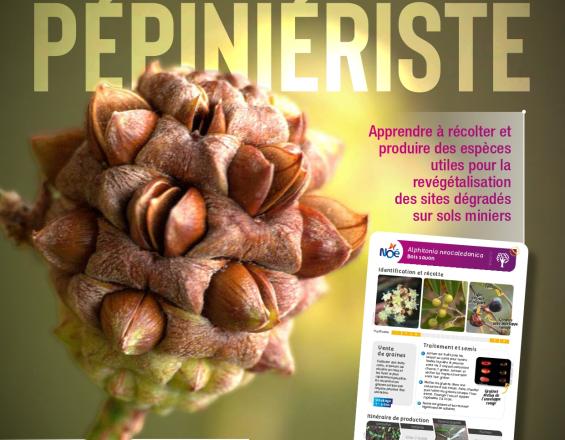
In New Caledonia, fires, mining and logging have reduced the forest area by 60%, leading to problems of water supply, soil erosion and sedimentation of the lagoon - a veritable larder for the local population. Public authorities are mobilizing to finance revegetation projects in the most degraded areas, and to require mining companies to restore their operations. The populations most affected by degradation are also the most willing and able to take action on their environment, but they have no access to the training that would enable them to acquire the necessary technical skills. With the BEST project, Noé wanted to develop "green" economic sectors by training local communities in ecological restoration and offering them an easy-to-use tool to learn how to harvest and produce pioneer species plants at home, for use in ecological restoration projects.
Context
Challenges addressed
The economic and social challenges addressed by this project are as follows:
- The absence of a database on the production of endemic maquis species;
- Lack of local technical training for people wishing to set up nurseries;
- Lack of recognition of local knowledge of endemic species production;
- Lack of tools to produce popularized, easy-to-use local species;
- The difficulty of supplying seeds to professional nurseries;
- Lack of (re)knowledge of the economic sectors involved in ecological restoration, including in vocational training institutes,
- Lack of information on the local nursery market (prices, buyers, supply chains).
- Lack of links between plant producers and buyers;
- The lack of economic sectors that can be developed directly in the tribes, by women or young people in particular, and adapted to the rhythm of cultural events.
Location
Process
Summary of the process
The building blocks are chronological. Each block needs the previous one to exist. Their common objective is to support a seedling harvesting and production chain for ecological restoration. The latter would have been conceived and developed with all stakeholders, and in particular with the involvement of local communities.
The dialogues in Block 1 helped to define the needs and problems of this sector, and to propose a solution. Block 2 is the construction of a tool to support this value chain, conceptualized with all the partners and above all with the tribal beneficiaries. Block 3 involves disseminating the tool and setting up the chain in the tribes.
Building Blocks
The procedures for structuring a seedling industry for ecological restoration have been established.
The key players in the nursery market were first identified and classified into four categories: growers, buyers, project leaders and technical partners. These actors, through their experience, represent the basis of the study to determine the challenges and limits of the project.
Through interviews, we were able to identify problems such as :
- difficulty in obtaining seed at fruiting time,
- lack of recognition of the sector in the tribe and in vocational training,
- the difficulty of developing an economic activity in the tribe, adapted to the community rhythm,
- the high level of technical skills required to produce seedlings in nurseries,
- the lack of popularized tools adapted to the local context for understanding the nursery trade,
- the lack of support for the industry (training, matching buyers and retailers, etc.).
The solutions proposed and discussed at the time were the development of a less technical seed-harvesting channel, better adapted to the local rhythm, the publication of a popularized nurseryman's guide and the introduction of vocational training courses in training organizations and directly on the tribe.
Enabling factors
New Caledonia being a small territory, identification was relatively quick and easy. The players all responded positively to our requests and answered all the questions asked during the interviews. The idea of a project that would be beneficial to all (producers, buyers, project leaders and partners) helped to rally all players around the project.
Lesson learned
The list of players cannot be exhaustive. To do the best we can, we need to focus on a small but representative number of players in each category. This number depends on the size of the territory.
For fast, effective interviews, you need to spend time upstream preparing the questions and methods of solicitation. You also need to be flexible and allow for new subjects to be mentioned. Also, as the interviews progress, it's a good idea to refer back to the problems encountered by other players and propose solutions in order to get fresh opinions.
A binder of technical data sheets adapted to local populations is created and distributed
Among the solutions identified, the data sheet guide was a priority tool, to bring together all the knowledge in a popularized, easy-to-use work that could be accessed by all. It was therefore necessary to collect all species data, images of each phenological stage and production data. It was also necessary to select a suitable range of species.
This guide was developed in collaboration with the tribal beneficiaries. Through workshops, participants contributed their user perspective on a first version of the product. These workshops provided an opportunity to discuss the format (modular binder), design (font and colors) and paper, as well as the content (vernacular names, choice of species, specific needs).
The final version was then circulated to the technical experts for review and validation before being sent to print.
Enabling factors
Much of the information was available from the agronomy research institute and professional nurseries, who agreed to share their knowledge.
The involvement of beneficiaries on a voluntary basis was of paramount importance, in order to integrate their empirical knowledge of the field into the guide.
The availability of local experts capable of reviewing, correcting and validating all the information was also essential.
Lesson learned
Gathering and reporting information is a very important and time-consuming task. This time should not be neglected when setting up a project.
In addition, local and empirical knowledge is often neglected, yet it contributes a great deal.
Finally, the workshops revealed that:
- the guide must be in binder format, modular, with resistant, waterproof paper for outdoor use in the field;
- species must be accessible close to homes, and be fast-growing so that satisfactory results can be observed over a short period;
- specific needs must be taken into account, such as harvesting sheets, production sheets and sales sheets. If possible, a checkbox format should be used.
Finally, it can sometimes be difficult to get all the players to agree on plant production methods. Flexibility solutions should be proposed, such as modifying the sheets by hand if necessary.
Local communities have acquired the skills needed to collect seeds and produce seedlings for the ecological restoration of degraded sites.
The guide was printed and distributed in pdf version online and in physical version, both free of charge, during public restitutions and meetings with partners identified during the interviews (block 1).
It was also used as the basis for training courses in seed harvesting and seedling production for ecological restoration, for people who had shown a willingness to take action. Training courses were therefore offered in existing community nurseries experiencing difficulties, and in vocational training institutes such as agricultural high schools or adult training centers.
Organized over one or two days, these training courses enabled participants to discover existing outlets in ecological restoration (harvesters, producers, planters, those responsible for ecological monitoring), as well as to acquire theoretical and technical knowledge through hands-on workshops. Participants learned how to recognize the plant species around them, observe fruiting, collect and store correctly, draw up follow-up sheets, start production (semi, transplanting, cultivation), and set up a plantation.
Enabling factors
The involvement of local communities in the project from the outset has ensured the success of the training courses. In addition, word of mouth reached people throughout the region.
In addition, satisfaction questionnaires were distributed at the end of each training session, enabling continuous improvement.
Lesson learned
Technical workshops in the environment in which the participants evolve and wish to work are essential in this type of training. It is therefore necessary to travel to the trainees' homes to give them hands-on training. It is also necessary to give importance to the empirical knowledge of trainees, so that it is valued and shared with all training participants. By co-designing the workbook with tribal members, we were able to observe that participants took to the tool more easily.
The most enthusiastic participants were women, who see nurseries as an activity they enjoy and a means of economic emancipation, and young people, who don't have many prospects and don't want to move to the city to work.
Nevertheless, the binder lacks an "economic" section to give an idea of investment and return on investment, as well as a governmental structuring of the sector.
Impacts
To achieve the project's objective, Noé mobilized a wide range of players:
- 14 experts helped define the project's challenges,
- 10 tribespeople helped draw up the guide,
- 4 experts revised and validated the guide,
- 71 people acquired the tool, including 35 professional structures wishing to improve their practices,
- 100 people have received training in ecological restoration,
- 50% of beneficiaries are women,
- 40% of beneficiaries are under 25,
- The 3 parts of the binder (1. guide from collection to cultivation; 2. technical sheets on 35 endemic species; 3. model monitoring documents) were appreciated,
- Discussions are underway to structure the industry on a regional scale;
Beneficiaries
- Tribal people wishing to increase their professional activity (including women and young people),
- Small nurseries wishing to strengthen their skills,
- Restoration projects wishing to buy back plants from the tribe.
Sustainable Development Goals
Story
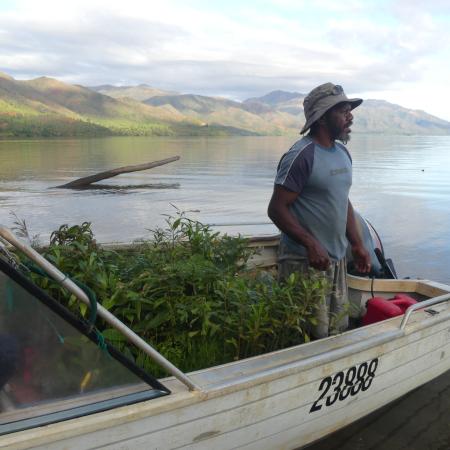
"I want to fight for this magnificent place" - Roxane, Petit Borendi tribe.
This magnificent place, the forest of the Petit Borendi tribe in New Caledonia, has unfortunately been degraded by man and is struggling to regenerate. Human action is now needed there, as it is throughout the territory, to restore the forests and their ecosystems, and combat the impacts of degradation.
Local communities are the most affected by these impacts, since they live in close contact with nature, which is their air, water, medicine and food. It is they who are willing and able to act quickly. The nursery was one of the solutions found to "fight" for this environment.
"With the nursery, we feel like we're making a contribution" - Radji, nurseryman at the Port Bouquet tribe.
Noé has been supporting associative nurseries since 2017, in order to produce plants and restore degraded environments near the tribes. We have observed that the nurserymen, after several years of investment, would have liked to make this their professional activity. Unfortunately, as the activity required a high level of theoretical knowledge and technical skills, the volunteer nurserymen needed a training tool that would enable them to refine their skills and be competitive in the marketplace. This is how the technical data binder project came about.
After mobilizing all those involved in the project to define the challenges to be met by the guide and the training courses, Noé developed the "nurseryman's guide": a comprehensive, technical and easy-to-use tool, designed with the beneficiaries in mind. This tool was put into practice during training sessions in the tribes and in professional training organizations. It has been enthusiastically received, particularly by women who love gardening, and by young people looking for a meaningful activity.
Radji is one of the people who gives meaning to this work. According to him, sensitivity to the environment is not innate. It comes from learning to open your eyes and read your surroundings.
"My vision of plants has completely evolved. I'm always looking at trees and trying to recognize them. That's how you learn to love them."
